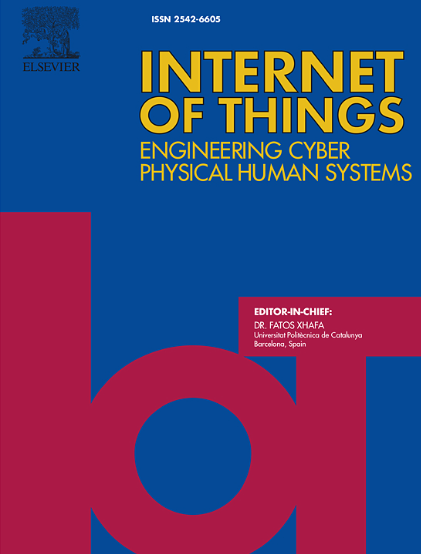Dynamic spectrum sharing in heterogeneous wireless networks using deep reinforcement learning
IF 6
3区 计算机科学
Q1 COMPUTER SCIENCE, INFORMATION SYSTEMS
引用次数: 0
Abstract
The rapid expansion of wireless networks demands efficient spectrum allocation. Dynamic Spectrum Sharing (DSS) is a technology that allows multiple wireless networks to share the same frequency spectrum dynamically. It is an effective technique for optimizing spectrum use, particularly in heterogeneous environments where multiple wireless technologies with diverse spectrum access requirements coexist, often leading to interference challenges and increased spectrum competition. This research proposes an enhanced DSS technique based on Deep Reinforcement Learning (DRL). The proposed method enables an effective sharing of the available spectrum between two access technologies, namely Long Term Evolution (LTE) and Narrowband IoT (NB-IoT). The study optimizes throughput through DRL methods, including Deep Q-Networks (DQN), conducting experiments in three phases: LTE-DRL coexistence, NB-IoT-DRL coexistence, and LTE-NB-IoT coexistence. Results show that deep learning enhances the LTE-DRL system’s convergence rate and throughput, achieving over 85% throughput with convergence times as low as 24 milliseconds (ms). The study highlights the trade-offs between parameters such as probabilities (arrival, successful transmission, and retransmission), packet expiry duration, learning rate, discount factor, fairness index, and the neural network architecture as well as the parameters’ impact on the overall system throughput. NB-IoT coexistence with DRL shows similar results with a slight decrement in throughput and negligibly longer convergence rate, while the coexistence of LTE and NB-IoT results in throughput of around 70% for each of the LTE and NB-IoT systems due to increased spectrum competition and increased complexity of the operating environment. This work offers insights into optimizing spectrum sharing using DRL and underscores the balance between various parameters for efficient spectrum management.
基于深度强化学习的异构无线网络动态频谱共享
无线网络的快速发展要求有效的频谱分配。动态频谱共享(DSS)是一种允许多个无线网络动态共享同一频谱的技术。它是优化频谱使用的有效技术,特别是在具有不同频谱接入需求的多种无线技术共存的异构环境中,通常会导致干扰挑战和频谱竞争加剧。本研究提出了一种基于深度强化学习(DRL)的改进决策支持技术。该方法能够在两种接入技术(即长期演进(LTE)和窄带物联网(NB-IoT))之间有效地共享可用频谱。本研究通过深度Q-Networks (Deep Q-Networks, DQN)等DRL方法优化吞吐量,分LTE-DRL共存、NB-IoT-DRL共存、LTE-NB-IoT共存三个阶段进行实验。结果表明,深度学习提高了LTE-DRL系统的收敛率和吞吐量,实现了85%以上的吞吐量,收敛时间低至24毫秒(ms)。该研究强调了概率(到达、成功传输和重新传输)、数据包过期时间、学习率、折扣因子、公平指数和神经网络架构等参数之间的权衡,以及参数对整个系统吞吐量的影响。与DRL共存的NB-IoT显示出类似的结果,吞吐量略有下降,收敛速度可以忽略,而LTE和NB-IoT共存导致LTE和NB-IoT系统的吞吐量在70%左右,这是由于频谱竞争加剧和操作环境的复杂性增加。这项工作为使用DRL优化频谱共享提供了见解,并强调了有效频谱管理的各种参数之间的平衡。
本文章由计算机程序翻译,如有差异,请以英文原文为准。
求助全文
约1分钟内获得全文
求助全文
来源期刊

Internet of Things
Multiple-
CiteScore
3.60
自引率
5.10%
发文量
115
审稿时长
37 days
期刊介绍:
Internet of Things; Engineering Cyber Physical Human Systems is a comprehensive journal encouraging cross collaboration between researchers, engineers and practitioners in the field of IoT & Cyber Physical Human Systems. The journal offers a unique platform to exchange scientific information on the entire breadth of technology, science, and societal applications of the IoT.
The journal will place a high priority on timely publication, and provide a home for high quality.
Furthermore, IOT is interested in publishing topical Special Issues on any aspect of IOT.
 求助内容:
求助内容: 应助结果提醒方式:
应助结果提醒方式:


